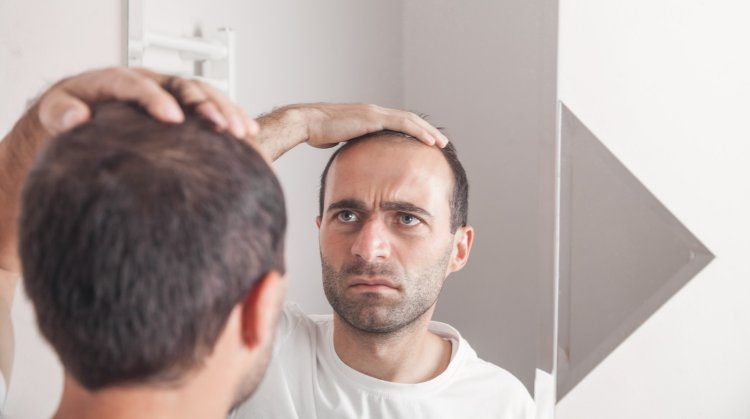Hair Transplantation: A Comprehensive Guide to Techniques, Innovations, and Patient Considerations
Hair loss affects millions of individuals worldwide, impacting self-esteem and quality of life. Hair transplantation has emerged as a leading solution, offering natural-looking results and long-lasting benefits. In this detailed guide, we explore the intricacies of hair transplantation, including advanced techniques, recent innovations, and crucial considerations for prospective patients.

Understanding Hair Transplantation
Hair transplantation is a surgical procedure aimed at redistributing healthy hair follicles from donor areas to balding or thinning areas, known as recipient sites. The procedure involves several crucial steps:
Patient Evaluation
A comprehensive evaluation assesses the extent of hair loss, the quality of donor hair, and the patient's overall health. This evaluation helps determine the most suitable technique and treatment plan tailored to the individual's needs.
Donor Harvesting Techniques
Hair follicles are harvested from donor areas, typically the back or sides of the scalp, where hair is genetically resistant to balding. Two primary harvesting techniques are Follicular Unit Transplantation (FUT) and Follicular Unit Extraction (FUE), each with its advantages and considerations.
Recipient Site Creation
Expertise in creating recipient sites is essential for achieving natural-looking results. Surgeons meticulously design the recipient area, considering factors such as hairline design, hair direction, and graft density, to ensure optimal aesthetic outcomes.
Follicle Transplantation Process
Transplanting harvested follicles into the recipient sites requires precision and skill. Surgeons carefully place each graft, paying attention to graft survival, angulation, and distribution to achieve the desired hair density and coverage.
Advanced Techniques in Hair Transplantation
Micrografting and Minigrafting
These techniques involve transplanting small clusters of hair follicles, known as micrografts and minigrafts, to create a natural-looking hairline and enhance overall density. Micrografting allows for precise placement of follicles, mimicking the natural hair growth pattern.
Direct Hair Implantation (DHI)
DHI is a variation of the FUE technique that involves directly implanting harvested follicles into the recipient site using a specialized tool called a Choi implanter pen. This technique minimizes handling of the grafts, reduces trauma to the scalp, and promotes faster healing.
Robotic-Assisted Hair Transplantation
Robotic systems, such as the ARTAS system, utilize advanced imaging and robotic arms to harvest and transplant hair follicles with unparalleled precision. These systems enhance the efficiency and accuracy of follicle extraction and implantation, resulting in superior outcomes.
Innovations in Hair Transplantation
Platelet-Rich Plasma (PRP) Therapy
PRP therapy involves isolating platelets from the patient's blood and injecting them into the scalp to stimulate hair growth and improve follicle health. When combined with hair transplantation, PRP therapy accelerates healing, reduces inflammation, and enhances graft survival rates.
Stem Cell Therapy
Stem cell therapy harnesses the regenerative properties of stem cells to stimulate hair follicle regeneration and promote hair growth. Research suggests that stem cell therapy, when used in conjunction with hair transplantation, may enhance graft survival and improve long-term outcomes.
Exosome Therapy
Exosomes, extracellular vesicles containing growth factors and signaling molecules, have emerged as a promising adjunctive therapy for hair transplantation. Exosome therapy stimulates hair follicle regeneration, accelerates healing, and enhances the overall quality of transplanted hair.
Essential Considerations for Prospective Patients
Choosing a Qualified Surgeon
Selecting a board-certified plastic surgeon or dermatologist with specialized training and experience in hair transplantation is paramount. Patients should research the surgeon's credentials, view before-and-after photos, and schedule a comprehensive consultation to discuss treatment options and expectations.
Realistic Expectations
While hair transplantation can yield significant improvements in hair density and appearance, it's essential for patients to have realistic expectations regarding the outcome. Factors such as the extent of hair loss, the quality of donor hair, and individual healing responses influence the final result.
Cost and Financing Options
The cost of hair transplantation varies depending on factors such as the technique used, the number of grafts required, and the geographic location of the clinic. Patients should inquire about financing options, payment plans, and potential insurance coverage for the procedure.
Post-Operative Care
Following hair transplantation, patients must adhere to post-operative instructions provided by their surgeon. This includes proper wound care, avoiding strenuous activities, protecting the scalp from sun exposure, and attending follow-up appointments for monitoring and assessment.
In conclusion, hair transplantation offers a transformative solution for individuals experiencing hair loss, providing natural-looking results and restoring confidence. With advancements in techniques and innovations in adjunctive therapies, the field of hair transplantation continues to evolve, offering new possibilities for patients seeking hair restoration. By understanding the various techniques, staying informed about recent innovations, and carefully considering important factors, prospective patients can make informed decisions and embark on their journey to a fuller, more confident appearance.
#HairTransplantation #HairLoss #HairRestoration #SurgicalProcedure #DonorHarvesting #RecipientSites #FUE #FUT #Micrografting #Minigrafting #DHI #RoboticAssistedTransplantation #PRPTherapy #StemCellTherapy #ExosomeTherapy #QualifiedSurgeon #RealisticExpectations #CostAndFinancing #PostOperativeCare #HairHealth #ConfidenceRestored
Disclaimer:
The information provided in this article is for educational purposes only and should not be considered medical advice. If you have any health concerns or are experiencing symptoms, it is important to consult with a healthcare professional, such as a doctor or clinic, for proper diagnosis and treatment. Always seek the advice of your doctor or other qualified health provider with any questions you may have regarding a medical condition. Do not disregard professional medical advice or delay in seeking it because of something you have read in this article.
What's Your Reaction?





















